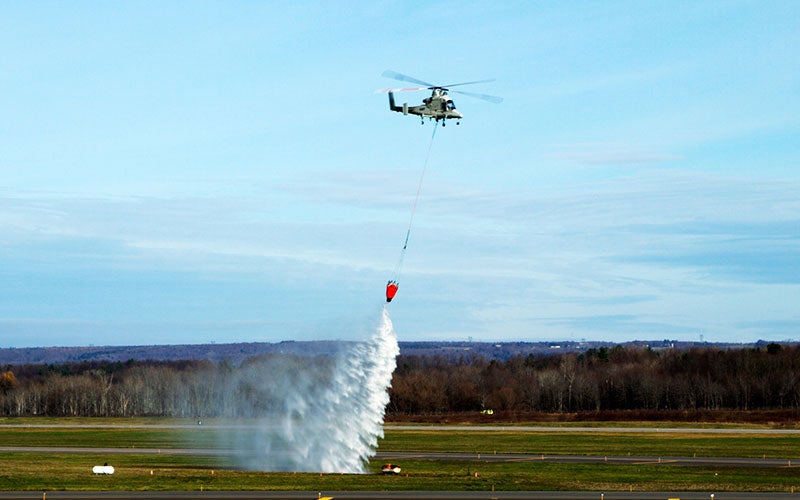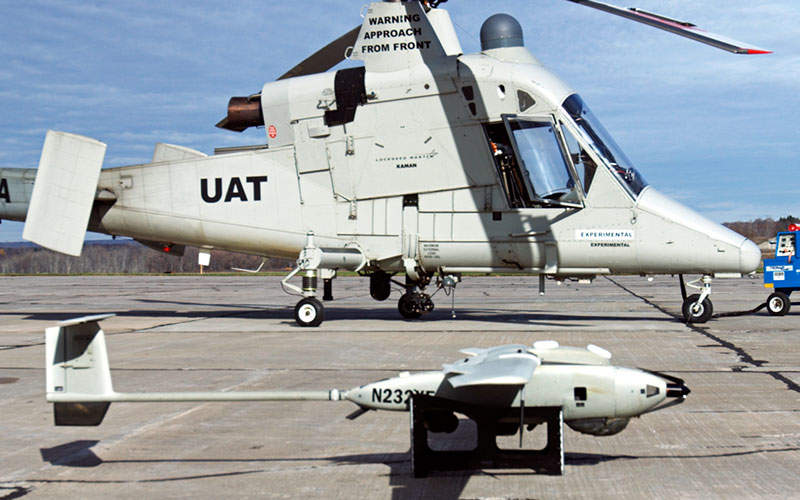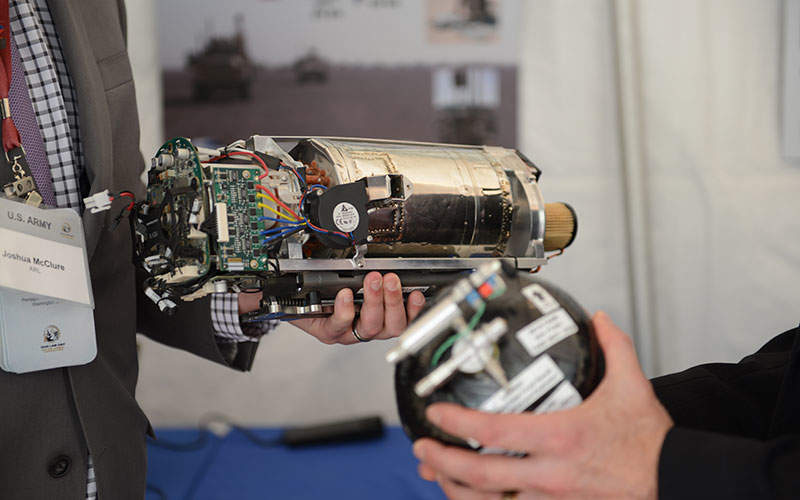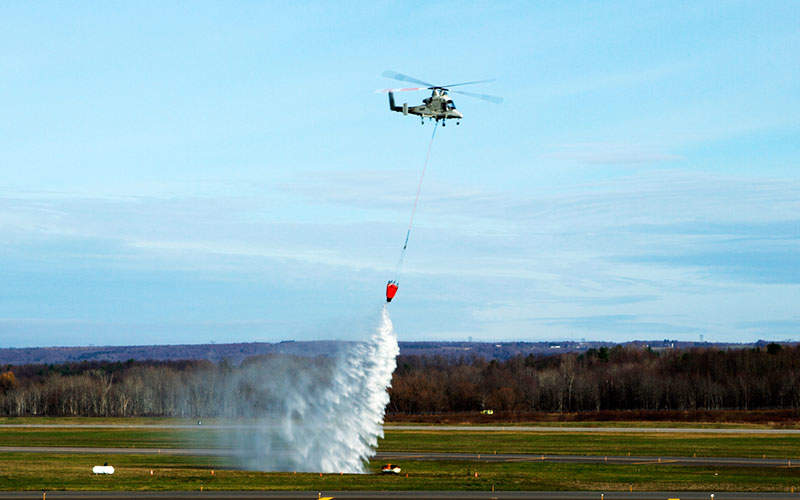
Stalker eXtended Endurance (Stalker XE) is an improved version of the Stalker small unmanned aerial system (UAS) introduced by Lockheed Martin Skunk Works in August 2011.
The Stalker XE is intended to provide intelligence, surveillance and reconnaissance data for warfighters. It can also be used for border patrol and other special operations. The basic Stalker UAS has been in service with the US Special Operations Command (USSOC) since 2006.
Collaborative unmanned systems demonstration
The drone took part in the collaborative unmanned systems demonstration conducted by Lockheed Martin for integrating unmanned systems into the National Airspace System (NAS) using prototype UAS Traffic Management (UTM), which ensures safe operation of the air vehicles by communicating with the air traffic control.
During the demonstration, which took place in Rome, New York, US, in November 2015, Stalker XE provided geolocation and data to the Kaman K-MAX unmanned cargo helicopter deployed in a fire-fighting operation.
The UAS was exhibited during the AUSA 2015 (Annual Meeting and Exposition) held in Washington D.C., US, in October 2015.
Stalker XE UAS design and features
The Stalker XE system features small, lightweight design and is man-portable. The complete system consists of two aircraft, fuel cells, small propane fuel storage tank, command and control ground station, and support equipment.
The unmanned aircraft has fixed-wing assembly, with two main wings fitted to the upper part of the fuselage and a T-tail empennage.
It has a wing span of 12ft and a maximum take-off weight of 22lb, and can carry payloads weighing up to 2lb. The aircraft can be launched by a bungee cord ground launching system and land on its skid, and is operated and controlled by up to two operators.
Payloads carried by Stalker XE aerial vehicle
The UAV is equipped with a modular dual electro-optical, infrared, low-light imaging camera under the fuselage to provide persistent surveillance and high-definition imagery during day conditions as well as night conditions. The imager’s pan, tilt and zoom (PTZ) head allows coverage of a wider area.
The Stalker XE also features a laser illuminator and a droppable payload compartment.
Laptop-based ground control station
The unmanned aircraft and its payloads are remotely monitored and controlled from a laptop-based ground control station that serves as the user interface for the operator. The imagery and data captured by the payloads are down-linked and processed at the ground station.
Propulsion and performance
Ultra Electronics‘ ruggedised hybrid energy source powers the Stalker XE unmanned aerial system. The power unit consists of a solid oxide fuel cell (SOFC) that runs on propane and integrates with a small, conventional lithium polymer battery of the Stalker.
The fuel cell technology was developed through an innovative effort that was sponsored by Defence Advanced Research Projects Agency (DARPA) and led by Lockheed Martin and Adaptive Materials (now a part of Ultra Electronics Holdings).
The UAV is also fitted with a two-bladed propeller at the nose.
Stalker XE performance
The Stalker XE can fly at a maximum speed of 45mph, operate at an altitude of 15,000ft and is inaudible beyond 400ft.
It is capable of operating under all environmental conditions. The fuel cell technology offers a flight endurance of more than eight hours, which is four times longer compared to the basic model.
The Global Unmanned Aerial Vehicles (UAV) Market 2011-2021
This project forms part of our recent analysis and forecasts of the global unmanned aerial vehicles (UAV) market available from our business information platform Strategic Defence Intelligence. For more information click here or contact us: EMEA: +44 20 7936 6783; Americas: +1 415 439 4914; Asia Pacific: +61 2 9947 9709 or via email.










